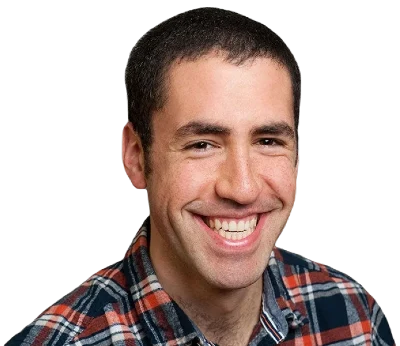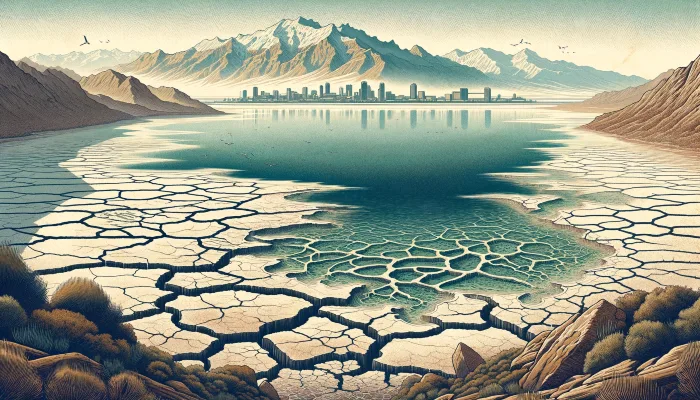The Great Salt Lake, a marvel of nature and a cornerstone of Utah’s identity, is in a dire state. Once a source of awe and ecological richness, the lake now faces a critical moment of truth.
Recent records show an alarming shrinkage, with water levels plummeting to historic lows, potentially triggering an ecological collapse in five years. But this isn’t just a climate change issue; it’s largely due to Utah’s decision to divert substantial amounts of river water that once nourished the lake. In short, this potentially catastrophic environmental and public health problem was entirely preventable!
This shrinkage isn’t just an environmental concern; it truly is a looming public health catastrophe.
If the lake continues to dry up, the delicate balance of its ecosystem, including its brine shrimp and flies, could collapse. This would not only devastate North America’s largest migratory bird colony, but also unleash a storm of toxic dust from the exposed lakebed.
Mercury and arsenic, previously submerged, could become airborne, affecting the 2.5 million people living nearby. A Republican lawmaker starkly described this as “an environmental nuclear bomb” if action isn’t taken.

In response to this crisis (and we’re not exaggerating), the nonprofit Earthjustice, representing conservation and community health groups, filed a lawsuit in September 2023. They argue that Utah has failed in its duty under the public trust doctrine to protect the lake.
Scott Stern, an attorney with Earthjustice, explains, “There are certain resources that can’t be owned by individuals. Instead, they belong to the public and the state has an obligation to protect them.”

The lake’s fate isn’t just a local concern; it’s a matter of statewide responsibility. Utah law places the lake under public trust, obligating the state to maintain its healthy elevation. Yet, the state allows significant diversions of water that have historically sustained the lake. Some even propose diverting more water for minimal benefit, further endangering the lake’s future.
Zach Frankel from the Utah Rivers Council, one of the plaintiffs, highlights the state’s water policies. Subsidies make Utah’s water among the cheapest in the country, often leading to wasteful uses, like growing non-native crops and excessive lawn watering. Frankel suggests viable solutions like reducing upstream diversions and adopting conservation practices, which could sustain the city and farms without jeopardizing the lake.
The risks of inaction are stark. Rising salt concentrations threaten to eliminate even the hardiest organisms in the lake. The exposed lakebed, rich in neurotoxins like mercury and arsenic, poses severe health risks, including developmental issues in fetuses, muscular control loss, heart attacks, and respiratory problems.
Salt Lake City, once free from dust storms, now experiences about 15 a year, a figure that’s risen alarmingly over the past decade and a half.
The situation is especially dire for the city’s west side, predominantly inhabited by people of color. Environmental justice advocates warn that wealthier residents might escape the impending crisis, leaving vulnerable communities to face its harsh realities.

History's Warning: The Aral Sea Catastrophe and Its Echoes in the Great Salt Lake
The fate of the Great Salt Lake isn’t just an isolated environmental issue; it’s a chapter in a global narrative of ecological mismanagement, with haunting historical precedents. Dr. Brian Moench from Utah Physicians for a Healthy Environment draws parallels to the disastrous outcomes witnessed in other parts of the world where salt lakes have dried up.
Central Asia’s Aral Sea, once the fourth-largest saline lake globally, serves as a dire warning. The Aral Sea, now almost completely desiccated, has unleashed a wave of health crises on the surrounding population. The drying of this once-massive lake has had profound and far-reaching impacts.


“In Uzbekistan, the population has seen a life expectancy plummet 13 years,” notes Dr. Moench. This startling statistic is just the beginning. He describes a cascading series of health disasters: “Child mortality has skyrocketed. Respiratory illnesses have increased, including drug-resistant tuberculosis. The list is almost endless.” These stark realities highlight the devastating consequences of environmental neglect.
The Aral Sea tragedy isn’t just a tale of ecological loss but a human crisis, mirroring the potential fate of the Great Salt Lake. As the Aral Sea shrunk, its exposed lakebed became a source of toxic dust, much like the looming threat over Utah’s iconic lake. The dust storms from the Aral Sea’s dry bed carried harmful substances, leading to severe health issues among the local populations, a scenario Utah could soon face.
The experience of the Aral Sea underscores the urgency of the situation facing the Great Salt Lake. It’s a stark reminder that the environmental degradation of such a significant body of water can have long-lasting and irreversible effects on both ecosystem health and human well-being.
As Utah confronts the reality of the Great Salt Lake’s decline, the lessons from the Aral Sea are clear. Immediate and decisive action is necessary to prevent a similar ecological and public health catastrophe. The drying of the Great Salt Lake could mirror the Aral Sea’s history, turning an environmental challenge into a human tragedy. Dr. Moench’s words serve as a somber warning: “That is the outcome we fear from the drying of the Great Salt Lake.”
More To Discover
- 20 Foods with the Highest Carbon Footprint and Their Eco-Friendlier Alternatives
- Superpowered Supercrystal Can Harness Sunlight For Enhanced Solar Energy and Hydrogen Production Using Nanotech
- Report Finds Nestlé Adds Sugar to Infant Milk in Poorer Nations, Against WHO Guidelines
- Siemens Energy’s Wind Turbine Woes Reflect Challenges in Germany’s Energy Shift
In January, 300 medical professionals appealed to Utah policymakers, warning of a serious health crisis if the lake’s decline isn’t reversed. Earthjustice’s lawsuit aims to compel the state to fulfill its duty to protect this natural wonder.
Stern sums it up: “The state is racing to catch up… How bad it’s going to get, experts can’t say yet.” This isn’t a remote possibility but a certain impending challenge, with the health consequences for Utah’s population yet to be fully understood. The fight for the Great Salt Lake is a fight for the future of Utah itself.



















